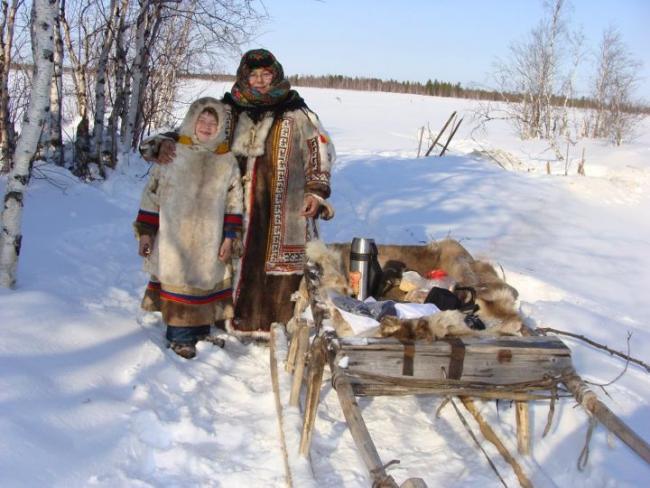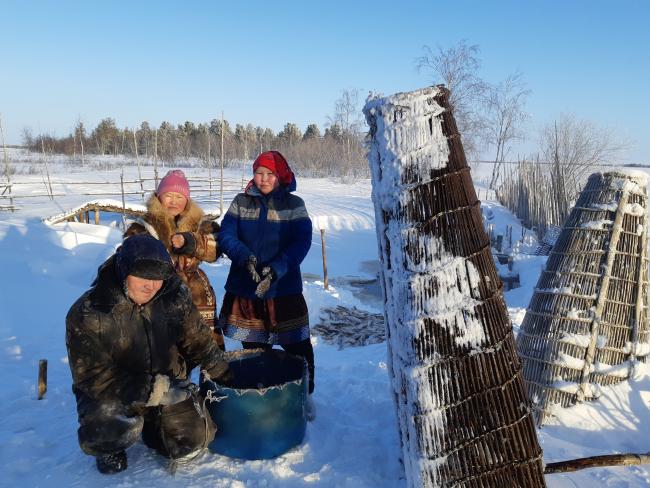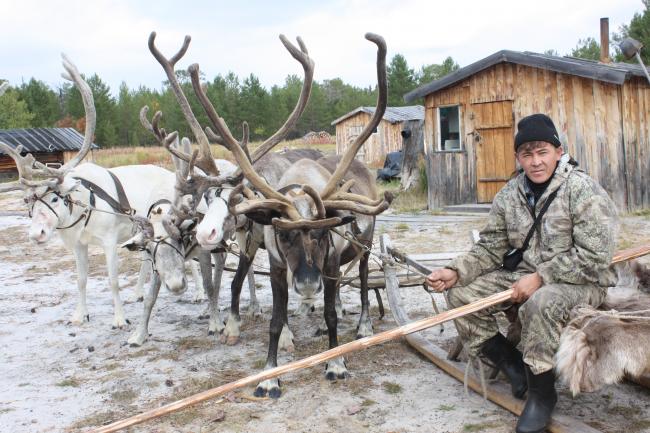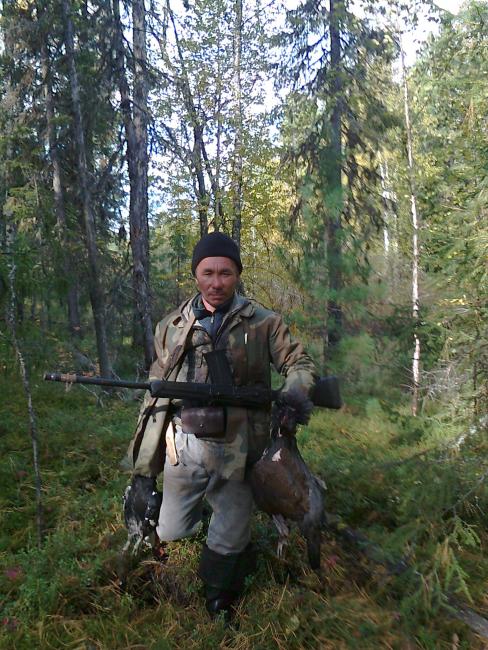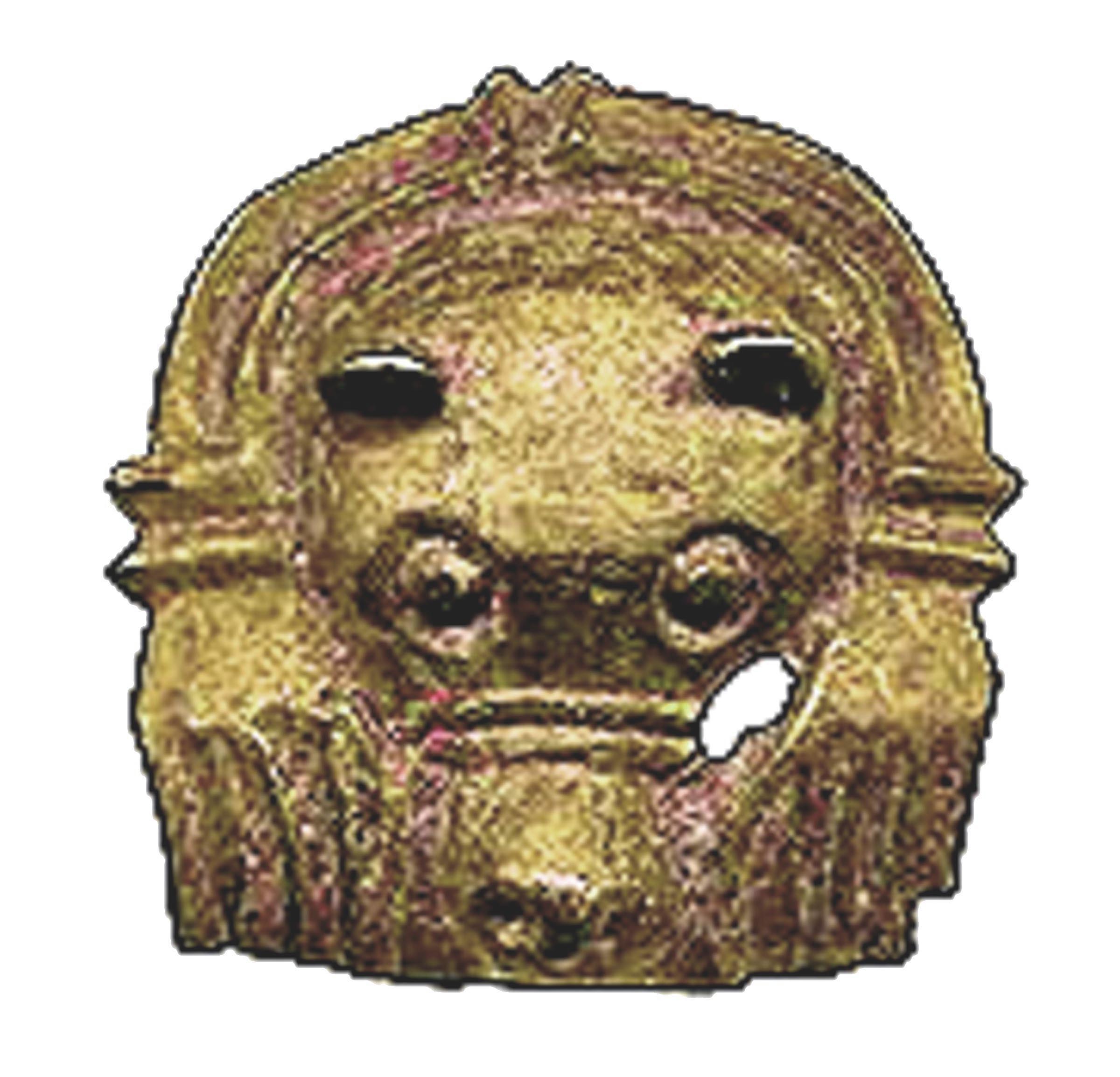

NORTHERN KHANTY
Northern Khanty, speaking the northernmost dialect of the Khanty language, live north of the confluence of the Ob’ and Irtysh Rivers. They are by far more numerous and widespread than the eastern Khanty. Northern Khanty live mostly in the basin of the Kazym River and other tributaries of the right bank of the lower Ob’, all the way to its mouth above Salekhard. Today some live in the okrug capital Khanty-Mansiysk, others live in a few village settlements, but most continue to live in separate extended family settlements, where they subsist on fishing and reindeer herding.
Three key moments, among others, today stand out in the cultural life of the northern Khanty. First, the Kazym River Khanty resisted Soviet policies in what became known the “Kazym Uprising”. Kazym was a new Soviet village set up as a “cultural base” from which to disseminate and enforce a number of Soviet policies including compulsory education, collectivization and atheism. The first led to the forcible removal of children to boarding schools, the second to the confiscation of privately owned reindeer herds and collectivized fishing in sacred Lake Num-To, and the last to the arrest and execution of shamans. Such policies led to conflicts, for which a permanent negotiated solution could not be found. In 1933 Soviet regional officials came to a Khanty camp where they captured and beat the rebellious Khanty; that evening a Khanty shaman ordered those Soviets ritually killed by strangulation. Some time later, after one brief skirmish, 88 Khanty and Forest Nenets were arrested, more than half of whom were ultimately imprisoned. One consequence of this event is that the hunting of bears and celebration of the Bear Festival was banned by the Soviets. Today members of those same Khanty families are leading the Northern Khanty Bear Festival revival. 1, 2
Second, the Soviet Union determined that the Kazym (northern) dialect would become the official dialect of the Khanty, and it is promoted to this day in publications and performances. This circumstance has meant that Northern Khanty also reap many benefits from the politics of culture. Today most of the Khanty cultural elite are northern Khanty, and they have played an important role in the revival of the Bear Festival.
Third, the Kazym River as a tributary flowing westward eventually enters Ob’ River floodplain not far from where the Northern Sosva River, flowing eastward out of Mansi country, enters the opposite side of the Ob’ floodplain. This made for regular communication between the Northern Mansi and Northern Khanty, and several important sites emerged, such as Vezhakory, for shared meetings and periodic Bear Festival celebrations, witnessed in the 1930s by the Soviet ethnographer V. N. Chernetzov3, which probably accounts for the similarity between the two variants of the Bear Ceremony.
THE NORTHERN KHANTY BEAR FESTIVAL
The northern Khanty Bear Festival, sometimes simply called the Kazym Bear Festival, has been made the subject of intensive study. Timofei Moldanov, who wrote his dissertation on the subject, has led its revival and renewal, and specialized in the worldview and types of songs the Bear Festival discloses.4 Tatiana Moldanova has specialized in northern Khanty ethnology and provided with annotations the “Song of Pelym Torum,” one of the most important songs performed during the festival, which can be read here. She has also written a book-length commentary on the song.5 Both indigenous scholars are members of the NSF research team and have made essential contributions to the description and video presented below on this page.
According to Tatiana Moldanova, the northern Khanty Bear Festival is distinguished by the structuring of specific sets of song materials. Within these sets of songs, some are required and some are optional. Every day of the festival, including the first, begins with the song of waking the bear. After this, each day come three, five, or seven Bear Songs; of these, the required ones are those that describe the bear's heavenly origin and the one which describes his earthly origin, the song of Pelym Torum. Bear Songs also include some geographic songs describing the bear’s wanderings, as well as the mandatory Bear Song on the last day that directs the bear’s souls (four for female, five for male) towards the Skyworld. A second set of song materials are devoted to the mish, spirit guardians of lakes and other places who bring good luck in hunting and fishing. A third set of song materials are about the mengkv, or forest spirits, who are guarantors of correct behavior in nature. Both mish and mengkv songs can involve the fourth genre, hlungalthtup, sometimes called skits or scenes, performed by characters in birchbark masks. Their presence is signaled early on by the “Song of the Arrival of the People from Pechora River.” Personages behind the mask are permitted everything, in good humor, including misbehavior and eroticism, but they are often chastised for it, as in the skit where the mengk chastises the disrespectful boatmen on the river. Men’s and Women’s dancing plays a very prominent part. The several days of songs, dances and skits are formally closed by the sweeping away of soot (evil) by scarves held in the hands of a sister who, with her brother, have come from the headwaters of the Irtysh for this purpose. Then the so-called Holy Night opens with the Song of Pelym Torum, which tells of the earthly origin of the bear. Then the great spirits and patrons of families come before the bear with songs and dances. These include Kazym Imi, the patroness of the Kazym people, and many other deities. If the deity is connected with the upper world, he wears a white kaftan and a red fox fur cap. If he is connected with the underworld, he dresses in dark clothes, and wears a black fox cap. Then the great goddess Kaltashch, accompanied by the clacking of arrowheads to drive away evil, comes to tell how she ordered everything on earth, and in the second part, turns to the women and instructs them on how to behave before and after childbirth. The Bear Festival ends with the arrival of animals who try to steal the souls of the bear, like the Crane, whose nest was destroyed by the bear, but failing that he destroys the bear’s house. The high god Torum comes with his seven sons to honor the bear. Thus the whole Khanty universe is made present to those who attend the Bear Festival.
THE SONG OF PELYM TORUM
“The Song of Pelym Torum” is one of the most important songs of the Bear Songs genre (Kh., “kайёяӈ ар”, literally “howling song”). It is part of the shared heritage of the Northern Khanty and the Mansi. Pulum Torum (as his name is pronounced in the song) is one of the sons of Numi-Torum, the highest deity, who divided the earth’s territory among his seven children. Pulum Torum is the deity responsible for the territory around the Pelym River. According to Mansi traditions, at the upper part of Pelym River, which flows out of the Ural Mountains, is the base of the opening that connects the Earth to the Sky World above. Several moments in the text of the song suggest that the cub, sometimes affectionately referred to as a “little chick,” is a child who assumes the image of a tundra beast, that is, a bear. Both the cub and Pulum Torum can also appear as men. The Song is extremely important because it tells how the bear with Pulum Torum established the precedents for conducting the bear festival,and for hunting, fishing and traveling.
Further information can be found in Молданова, Татьяна, 2010. Пелымский Торум – устроитель медвежьих игрищ. Ханты-Мансийск: Полиграфист, 2010.
Here is the full, trilingual text of the song in Khanty, Russian, and English, as performed on 3 March, 2015, as sung by A. A. Yernikhov at a Bear Festival in Kazym, Khanty-Mansi AO-Yugra, Russia.
You can listen to the song by playing the .mp3 files linked below.
Song of Pelym Torum MP3 Part 1
A. A. Yernikhov (L) and Timofei Moldanov (R)
Song of Pelym Torum MP3 Part 2
A. A. Yernikhov, with assistants on either side
REGIONAL VARIANTS OF OB-UGRIAN BEAR FESTIVAL
Follow the links below to see film and photos that illustrate how the bear festival as practiced today by different peoples in western Siberia.
Northern Mansi Bear Festival
Eastern Khanty Bear Festival
1 Чернецов, В. Н. 2001. Медвежий праздник у обских угров. Перевод с немецкого и публикация Н. В.Лукиной Томск: Изд-во ТГУ.
2 Balzer, Marjorie.1999. The Tenacity of Ethnicity: A Siberian Saga in Global Perspective. Princeton U P. Ch. 4
3 Леэте, Арт. 2004. Казымская Война: восстание хантов и лесных ненцев против советской власти. Pyltsamaa.
4 Moldanov, T. A. 2002. Картина мира в медвежьих игрищах северных хантов XIX –XX вв.: Дис. …канд. ист. наук. Tomsk; Moldanov, T. A. and Sidorova, E.V. 2010. Хантыйские медвежьи игрища: танцы, песни. Khanty-Mansiysk. See also: Schmidt, É., 1989. Bear cult and mythology of the Northern Ob-Ugrians. Uralic Mythology and Folklore. Ethnologica Uralica, 1.
5 Moldanova, T. A. 2010. Пелымский Торум – устроитель медвежьих игрищ. Khanty-Mansiysk; Moldanova, T. A. and T. A. Moldanov. 2000. Боги земли Казымской. Тomsk.


